Regulate Trans Fat, Even if Burden is Low

Fact sheet from Resolve to Save Lives making the case for trans fat regulation in low-burden settings
Understanding, preventing, and stopping epidemics
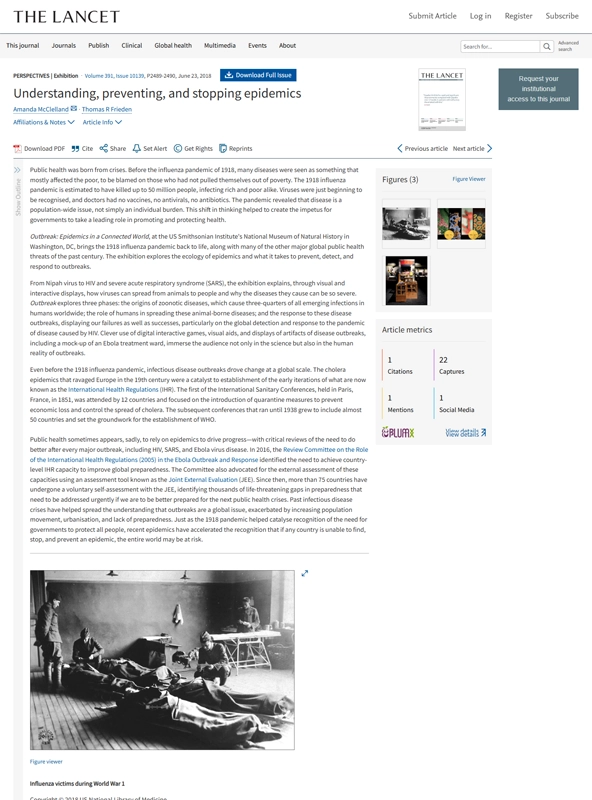
The Smithsonian exhibition, Outbreak: Epidemics in a Connected World, shows that the world cannot afford to wait for the next epidemic—we must act on the information that we have now to end preventable outbreaks. Writing for the Lancet, Resolve to Save Lives reflects on the impact of epidemics over the past century, from Nipah virus […]
Increasing uptake of low-sodium salt

Fact sheet highlighting the addition of low-sodium salt to one’s diet to reduce blood pressure and associated risk of heart attack or stroke.
Nutrient Profile Models: A valuable tool for developing healthy food policies

Position paper from GHAI, Resolve to Save Lives and other partners presenting best practices for defining, selecting and using effective NPMs.
Timeliness metrics for screening and preventing TB in household contacts of pulmonary TB patients in Kenya
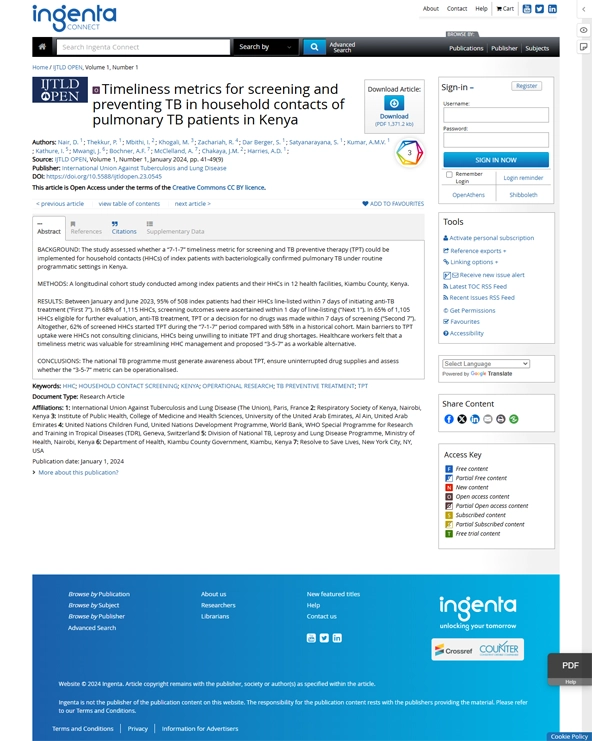
In a study published in the International Journal of Tuberculosis and Lung Disease, our colleagues at the International Union Against Tuberculosis and Lung Disease and the Respiratory Society of Kenya evaluated the feasibility of implementing a “7-1-7” timeliness metric for screening and initiating TB preventive therapy (TPT) among household contacts (HHCs) of index patients with […]
Healthy School Canteen
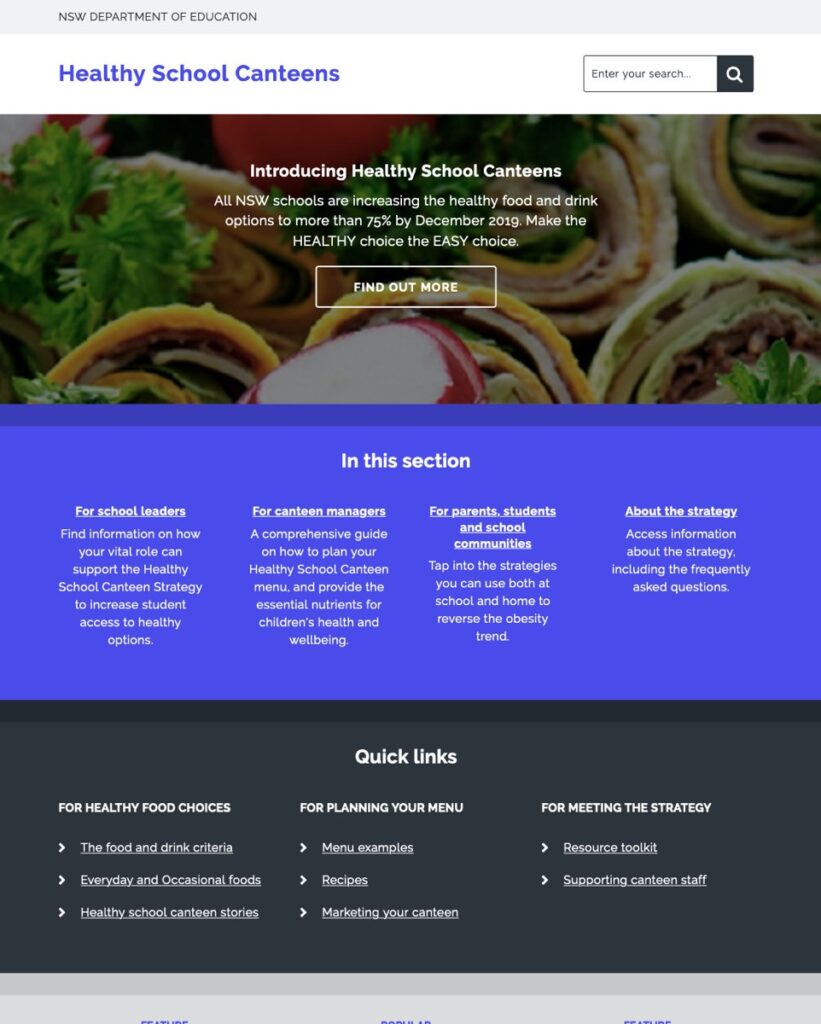
Includes resources to support transitioning to healthier school canteens for school leaders, canteen managers, parents, and communities.
Healthy Public Food Procurement and Service Policies Fact Sheet
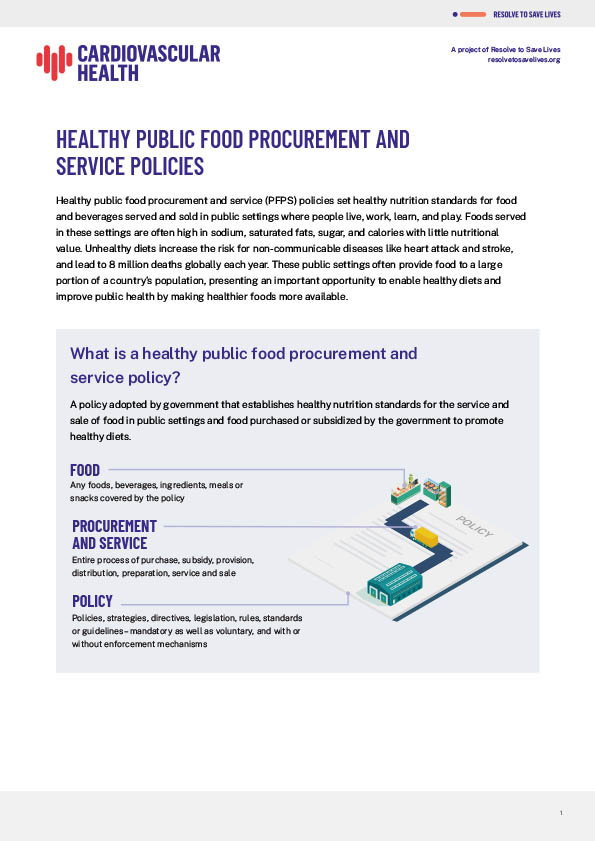
Core principles, benefits and resources for implementing healthy food procurement and service policies.
Healthy Food and Drink in NSW Health Facilities for Staff and Visitors Framework (2017)
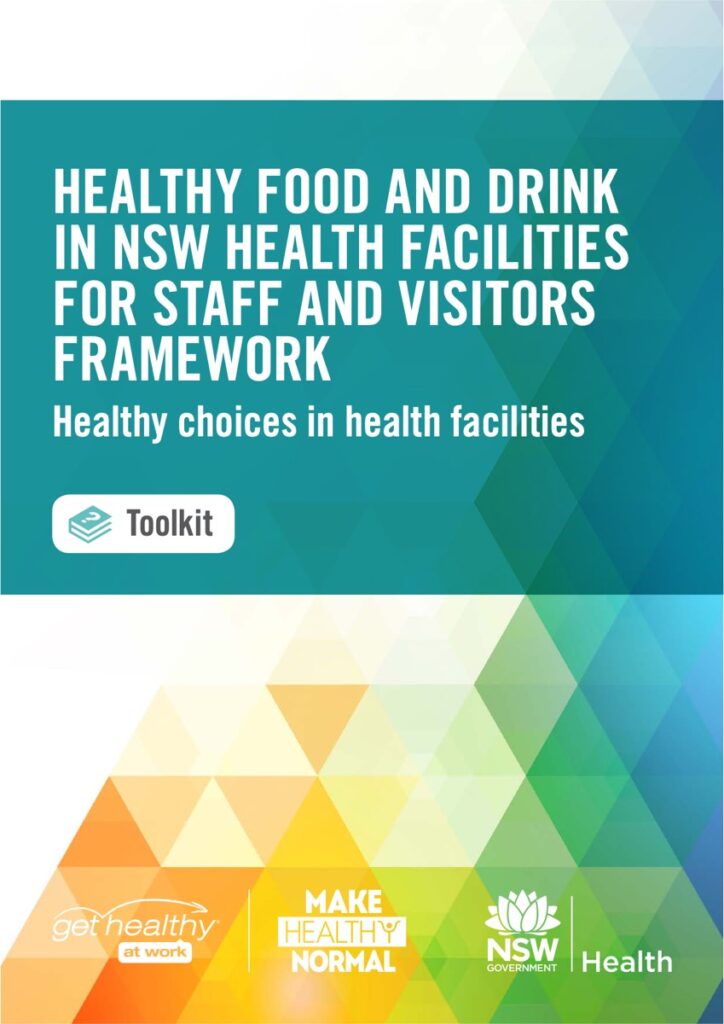
Best practice guidelines for health facilities to use for cafes/cafeterias, vending machines, convenience stores/newsagents, retail premises, and catering.
ACT Healthy Food and Drink Choices
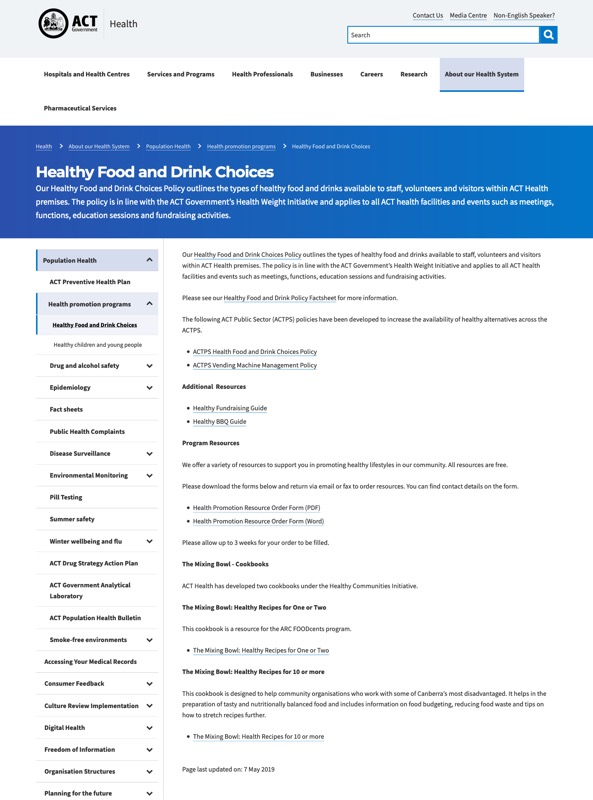
Standards for food and drinks available to staff, volunteers, and visitors for ACT Health premises; links to Healthy Food and Drink Choices and Vending Machine Management Policies.
Resources for Victoria School Operations: Canteens, Healthy Eating and Other Food Services
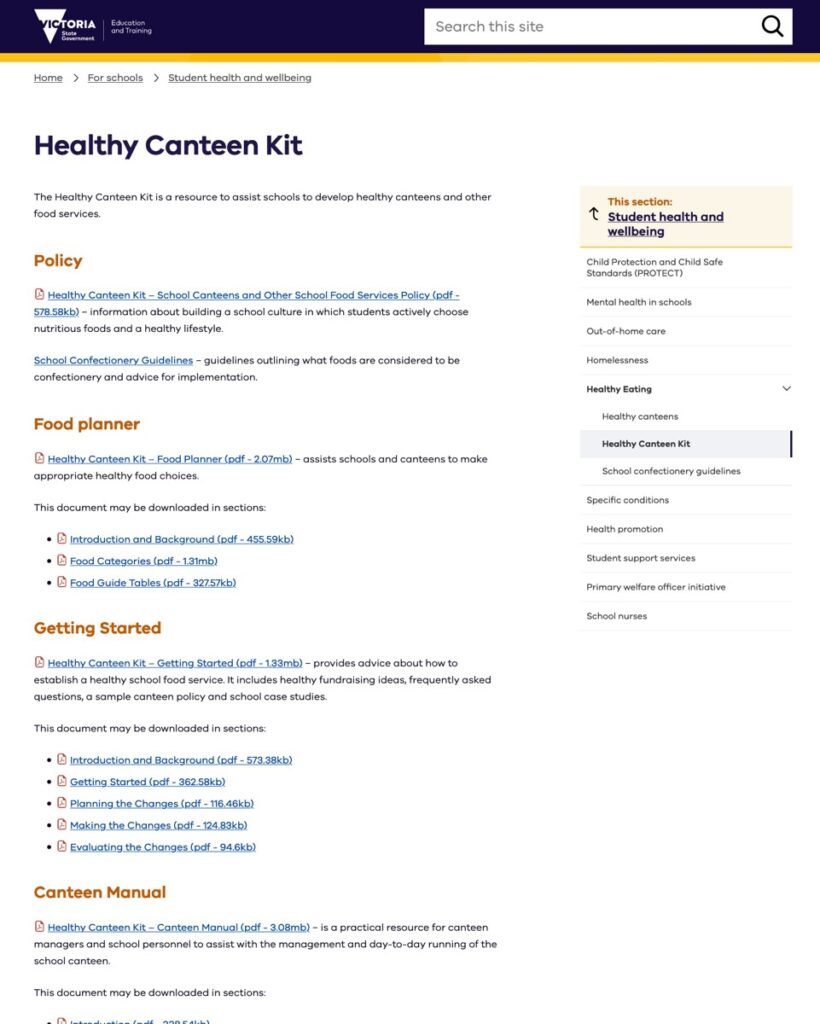
Resources to assist schools develop healthy canteens. The website includes links to the policy, evaluating changes, food planners, and educational materials.
Kaiser Permanente Healthy Picks website
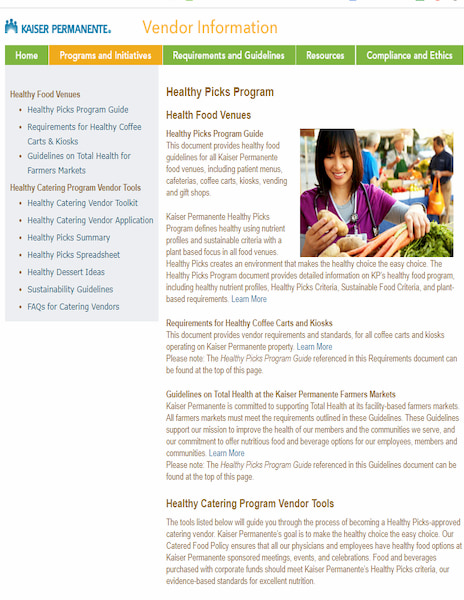
Describes healthy food guidelines and implementation resources for hospital food venues, including patient menus, cafeterias, coffee carts, kiosks, vending and gift shops.
Healthy Workplace Food & Beverage Toolkit website
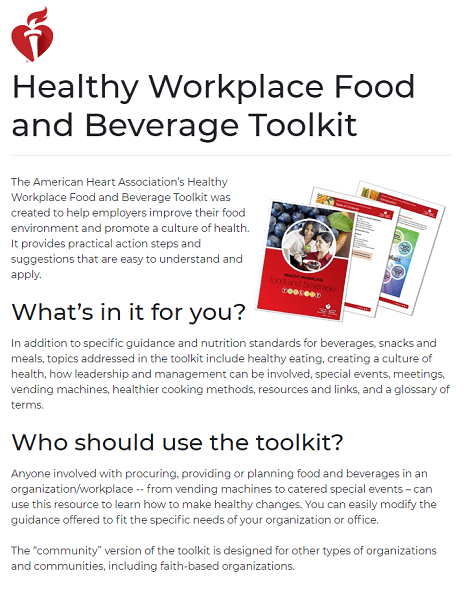
Includes links to vending machine data collection tools and checklist for meetings and catered meals.
Healthy State Act (2012)
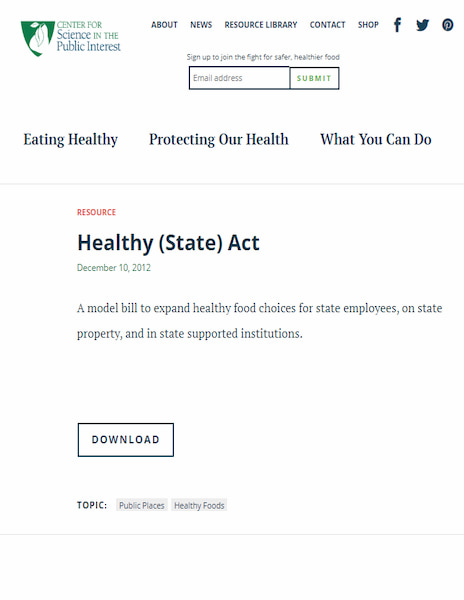
Model bill to expand healthy choices for government employees and in government institutions.
Healthy food procurement and nutrition standards in public facilities: evidence synthesis and consensus policy recommendations
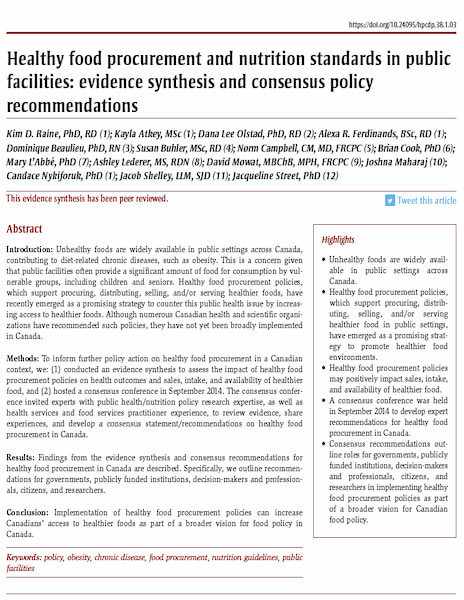
Synthesis of evidence and consensus conference to inform further policy action on healthy food procurement in Canada.
Learning from Sustainable School Feeding in Brazil
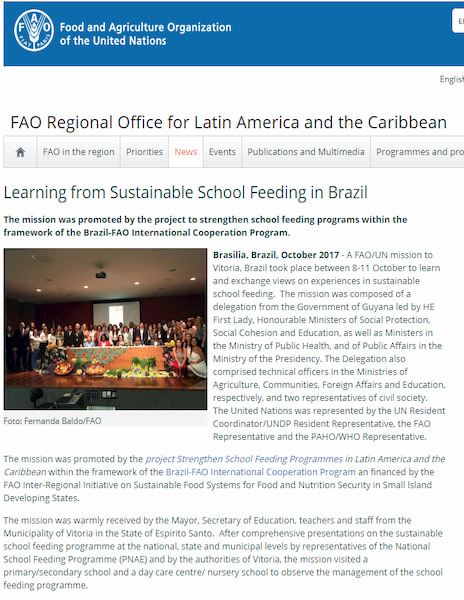
Describes school feeding programs in Brazil. Scientific article on school nutrition programs: Sidaner E, Balaban D, et al. The Brazilian school feeding programme: an example of an integrated programme in support of food and nutrition security. Pub Health Nutr. 2013;16(6):989-94.
Impact of the Food-Labeling and Advertising Law Banning Competitive Food and Beverages in Chilean Public Schools, 2014–2016
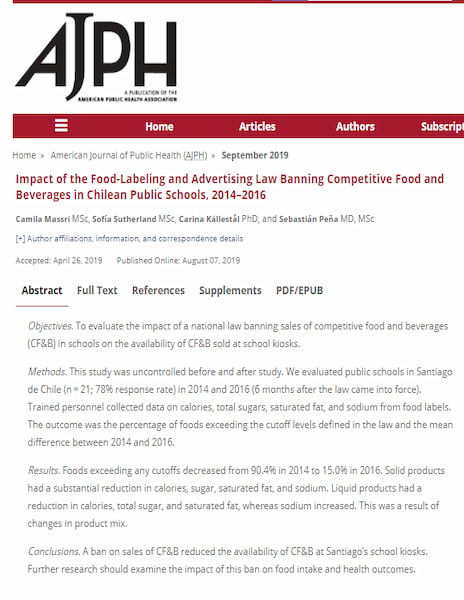
Reviews the impact of the national law banning sales of competitive food and beverages in schools, based on Chile’s Law of Food Labeling and Advertising. Results show that availability of foods exceeding cutoffs decreased from 90.4% in 2014 to 15.0% in 2016 after policy implementation.
School nutrition guidelines: overview of the implementation and evaluation
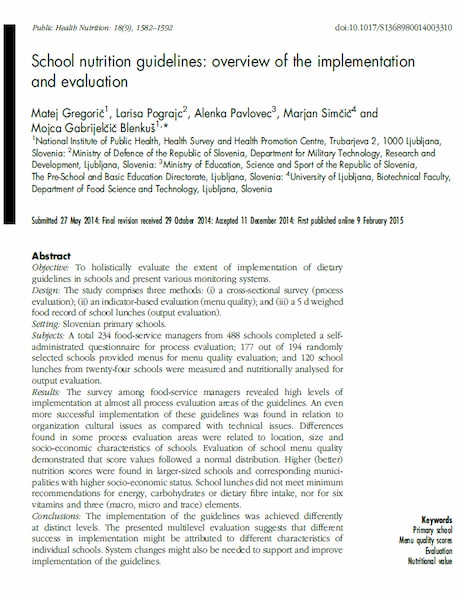
Describes three methods of evaluating the implementation of dietary guidelines in schools in Slovenia: (i) a cross-sectional survey, (ii) an indicator-based evaluation of menu quality; and (iii) a five day weighted food record of school lunches (output evaluation). The multi-level evaluation suggests that some differences in implementation are attributed to school characteristics; system changes may […]
Healthier and more sustainable catering website
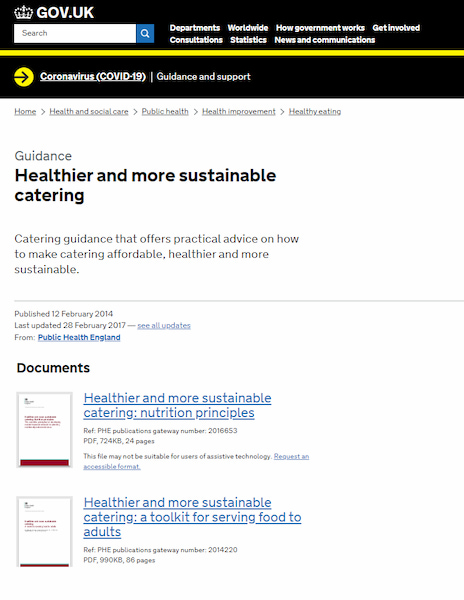
Resources include a description of nutrition principles of healthier catering and a toolkit for serving older people in residential care
Healthy Choices website
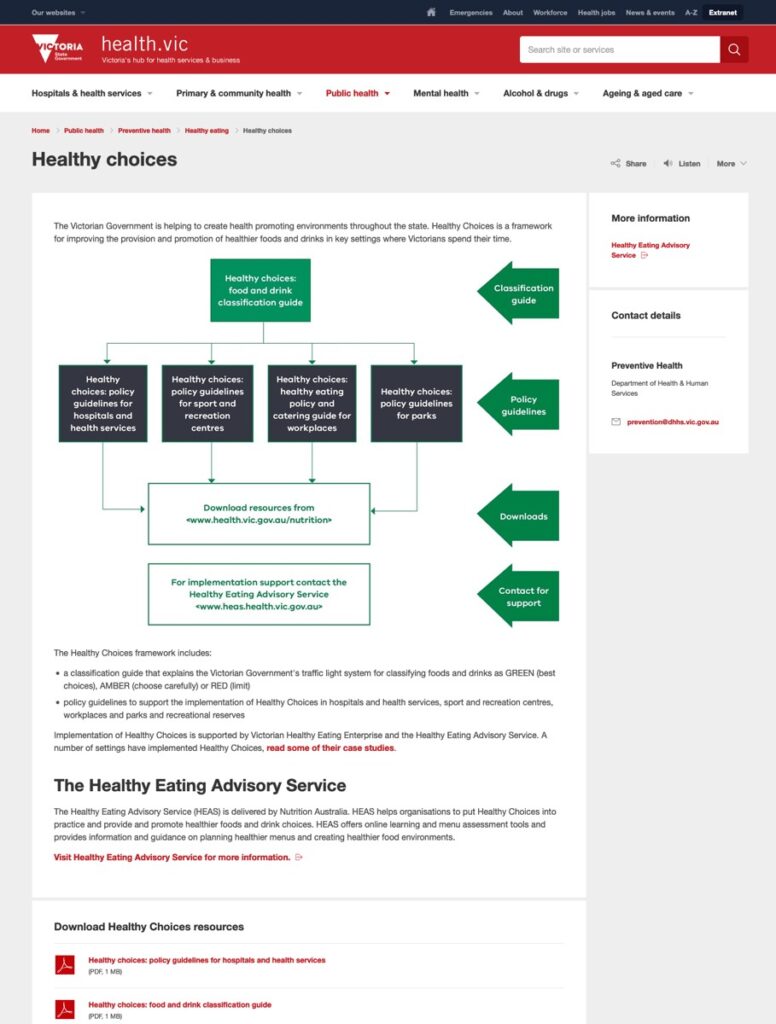
Guidelines to help workplaces, hospitals and health services, parks, and sporting centers provide healthy foods and drinks.
India’s School Children Regulation
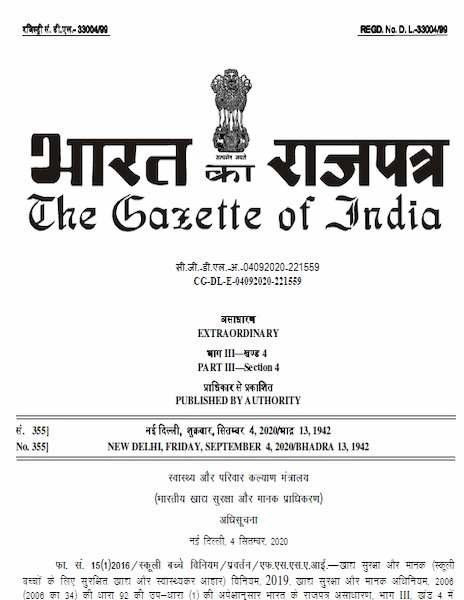
India’s regulation including restrictions on the advertising, marketing, or selling of food products high in saturated fat or trans-fat or added sugar or sodium on school campuses or to school children in an area within fifty meters from the school gate in any direction.
Healthy Meals in School Programme
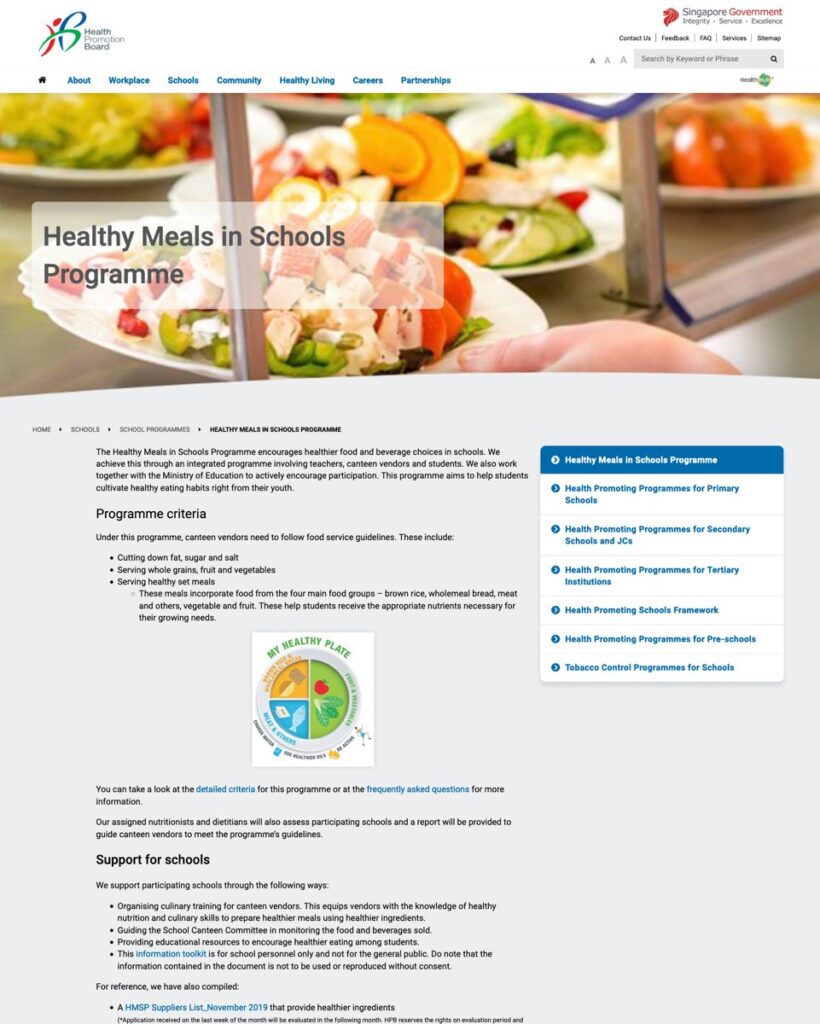
Describes program criteria and support available for schools.
Home Grown School Feeding Initiative
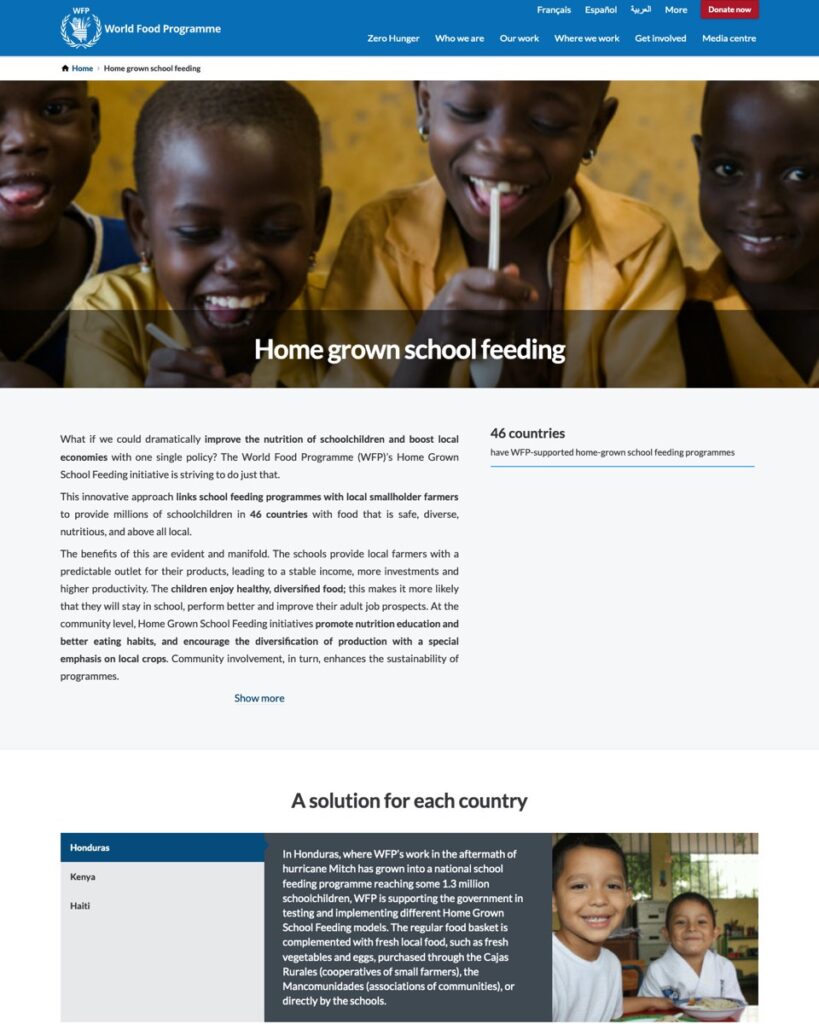
Website describes Initiative, which links school feeding programs with local smallholder farms to provide food for schoolchildren.
A Global Review of Food-Based Dietary Guidelines
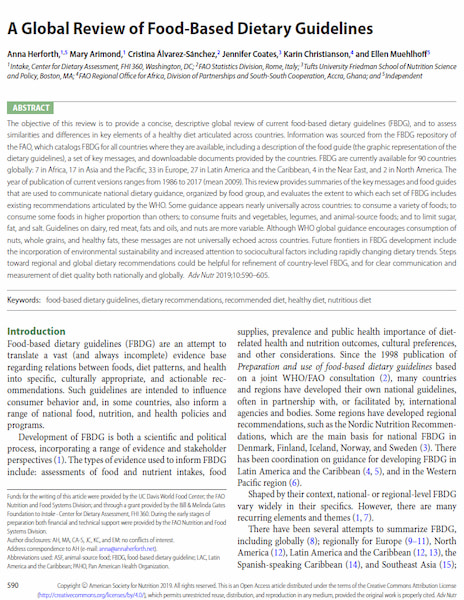
Review of current food-based dietary guidelines (FBDG), assessing the similarities and differences in key elements across countries
Monitoring foods and beverages provided and sold in public sector settings
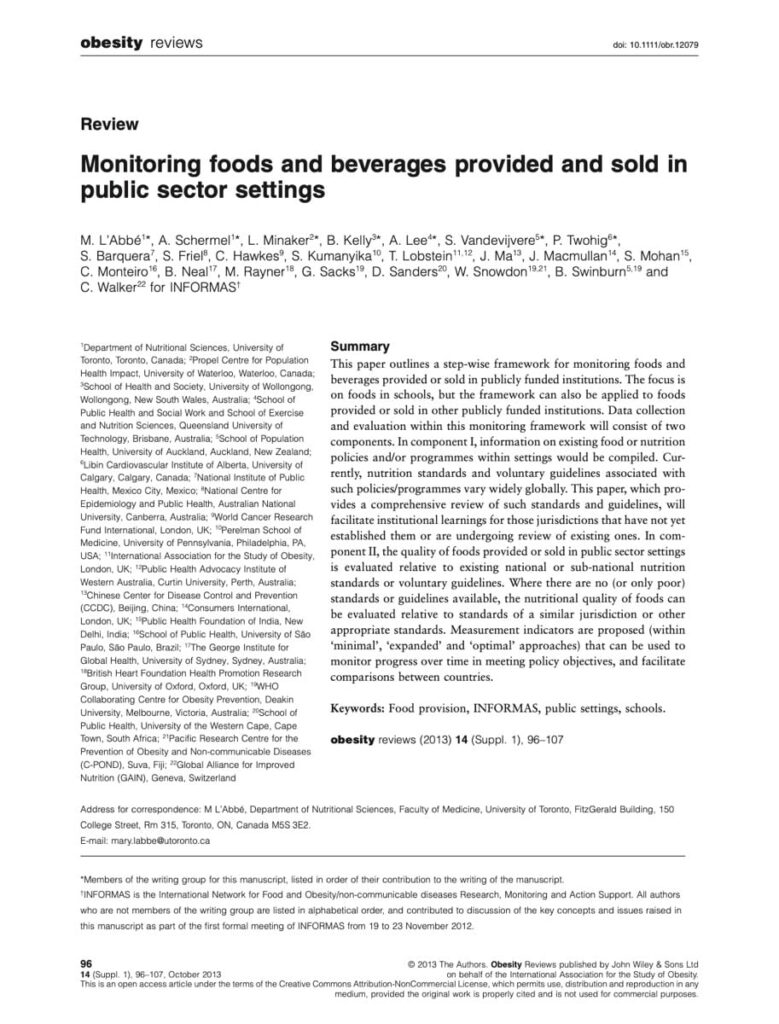
Step-wise framework for monitoring, includes: 1) previous monitoring activities of school food programs, and 2) survey questions for initial assessment.
INFORMAS Public Sector Policies and Actions – The Healthy Food Environment Policy Index (Food-EPI)
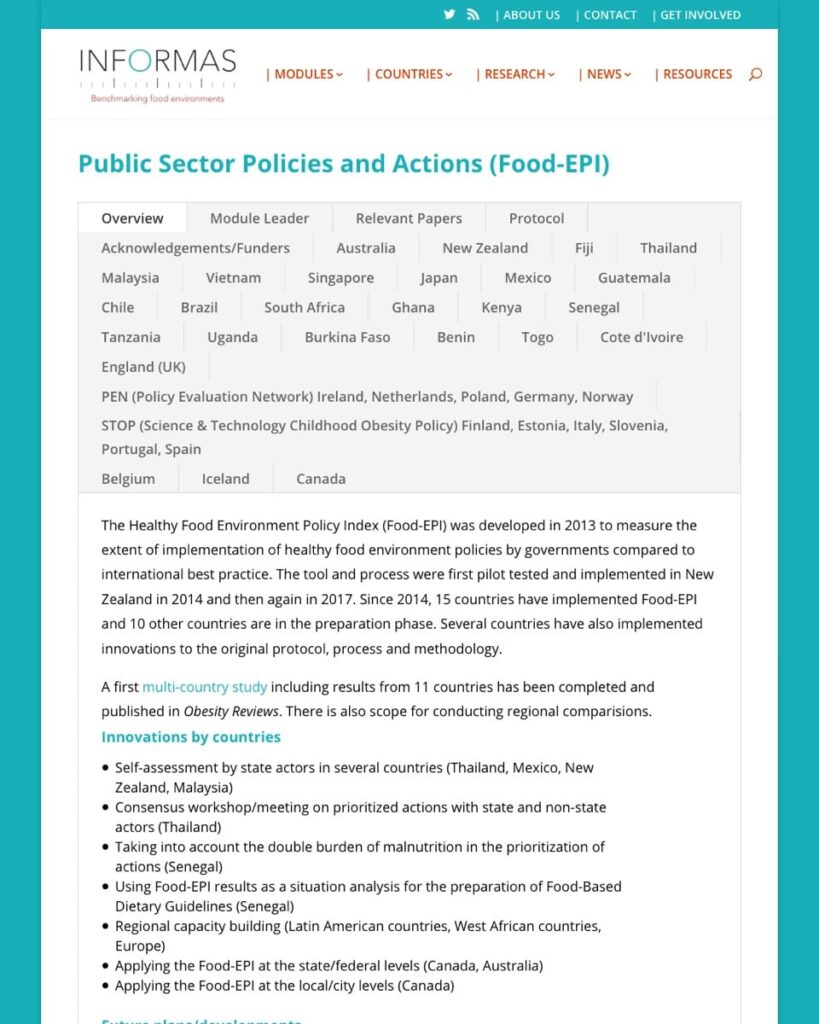
The policy index measures the extent of implementation of health food environment policies by governments compared to international best practice and includes a module on Food Provision.
Healthy food procurement policies and their impact
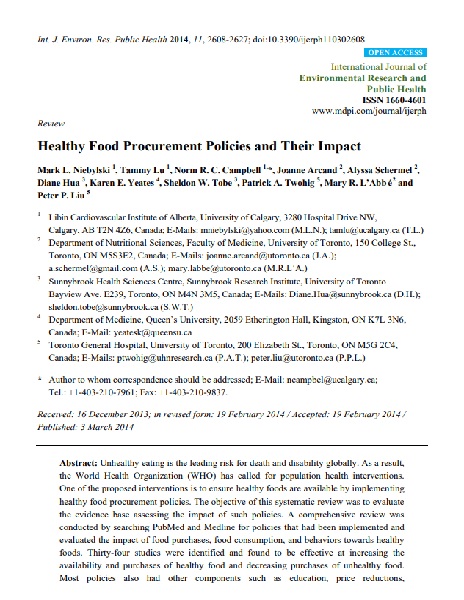
Systematic review of the evidence base for healthy food procurement policies
Trans fat elimination communications toolkit
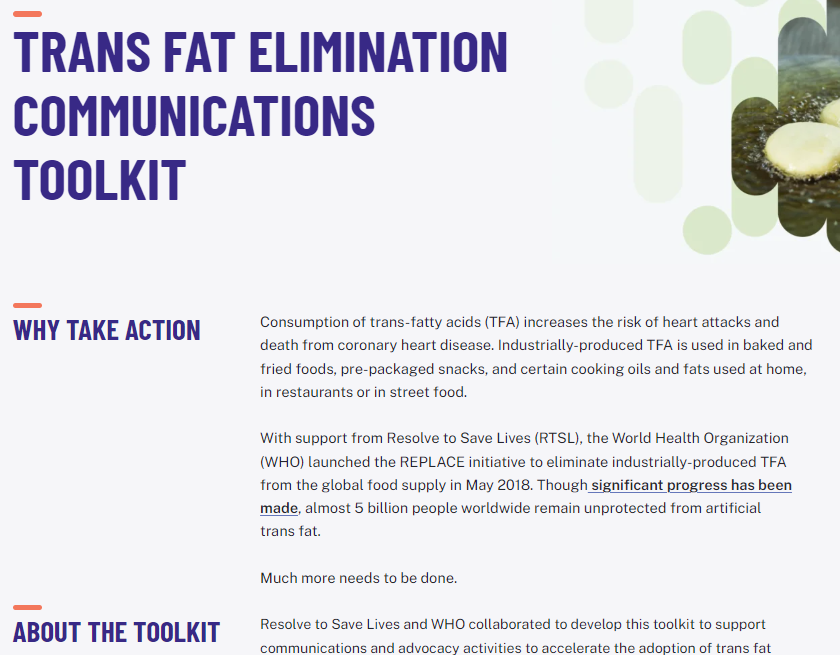
Toolkit for communications and advocacy activities to accelerate the adoption of trans fat elimination policies, including social media resources and customizable templates
Hypertension: A neglected global health crisis
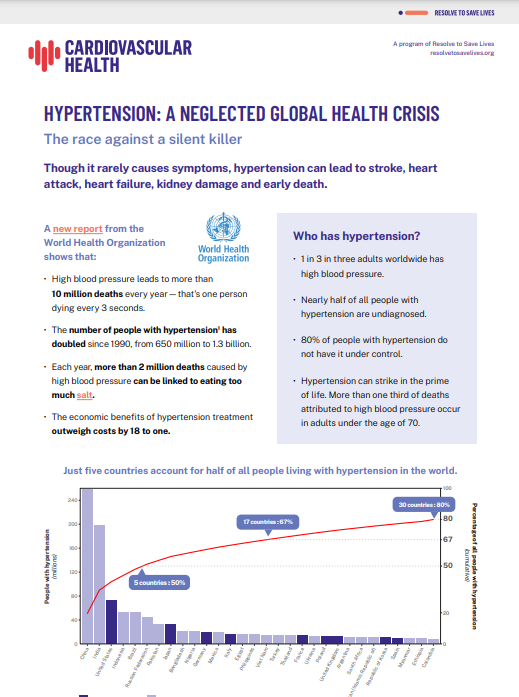
Key findings from WHO’s first-ever Global Hypertension Report, which shows that the number of people with hypertension has doubled since 1990, from 650 million to 1.3 billion, and the economic benefits of hypertension treatment outweigh costs by 18 to one.
Global report on hypertension: The race against a silent killer
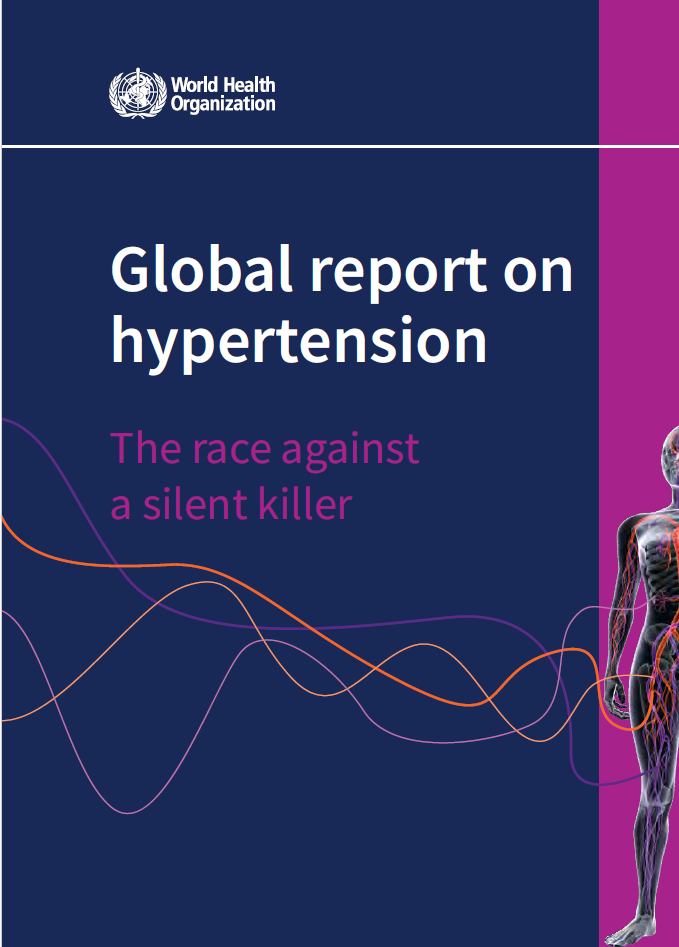
WHO’s first-ever report on the global burden of high blood pressure and the progress made to manage the disease.
Understanding the role of staff nurses in hypertension management in primary care facilities in India: A time-motion study
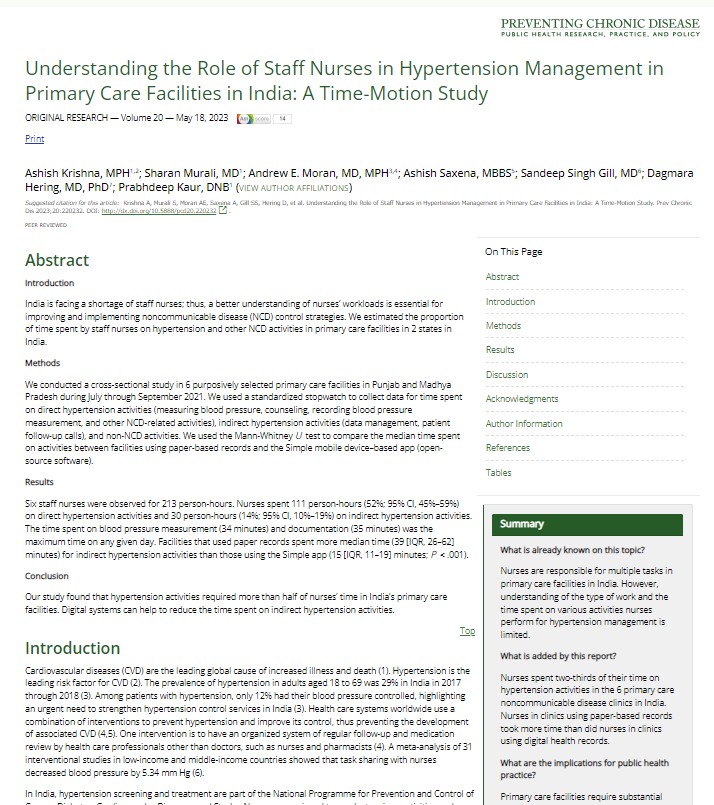
Study estimating time spent by staff nurses on hypertension and other NCD activities in primary care facilities and time savings from the Simple app